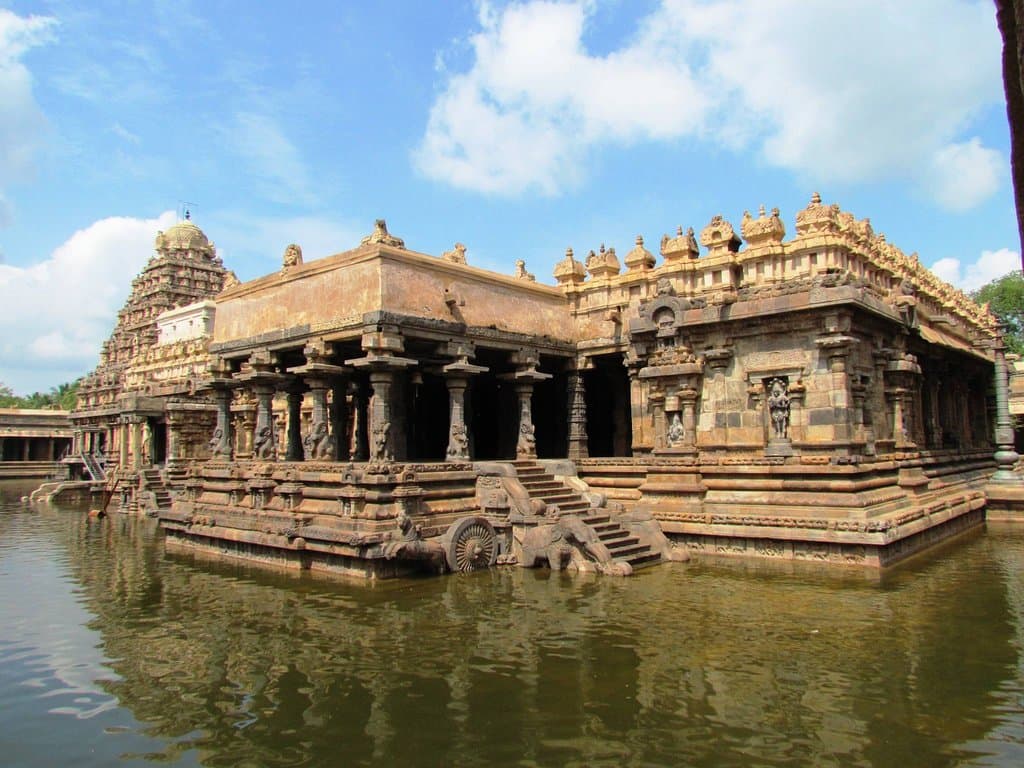
Airavatesvara Temple Darasuram
A 12th-century Chola masterpiece, this UNESCO site enchants with intricate carvings, musical steps, and a chariot-shaped structure.
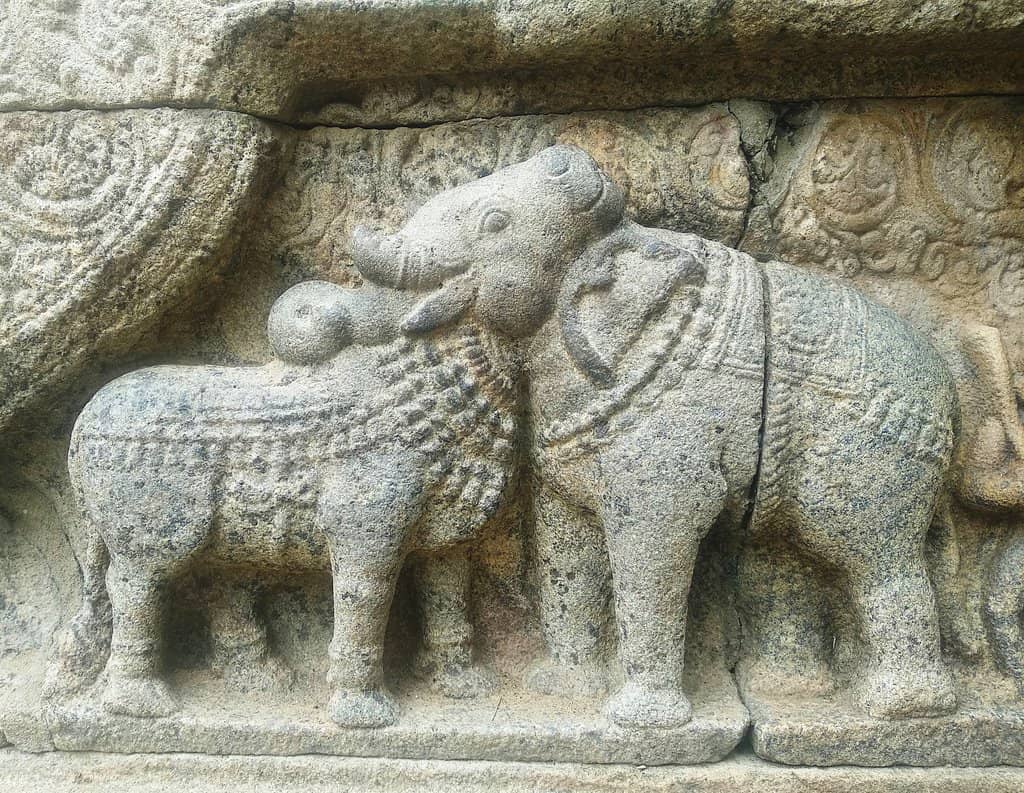
Highlights
Must-see attractions

Social
From TikTok & Reddit
Best Time
Peaceful exploration

Airavatesvara Temple Darasuram
Best Time
Peaceful exploration

Highlights
Must-see attractions
A 12th-century Chola masterpiece, this UNESCO site enchants with intricate carvings, musical steps, and a chariot-shaped structure.
"An architectural marvel that left me absolutely awestruck, blending mythology, art, and devotion."
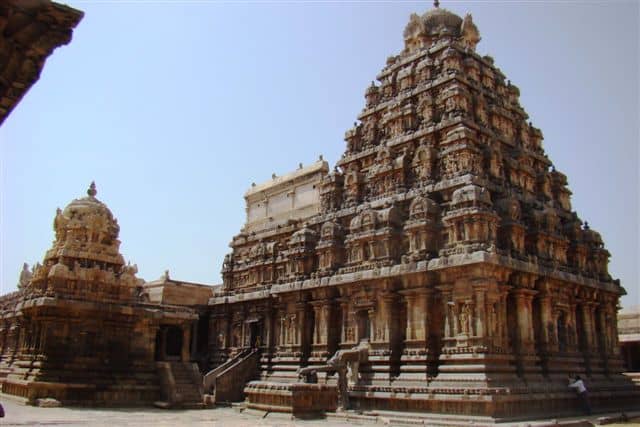
📸 Capture the Details
The intricate carvings are best photographed in soft light. Explore different angles to showcase the artistry.
🚶♂️ Explore at Your Pace
Allow at least an hour to truly appreciate the detailed sculptures and architectural marvels.
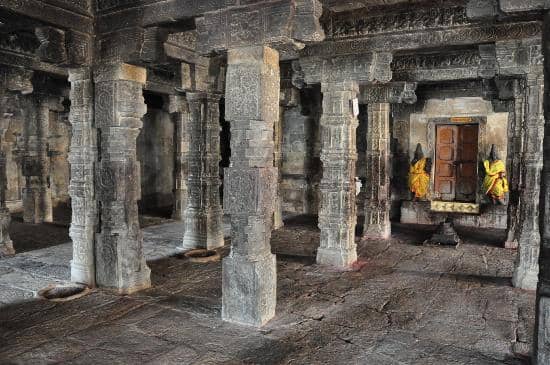
Highlights
Discover the most iconic attractions and experiences
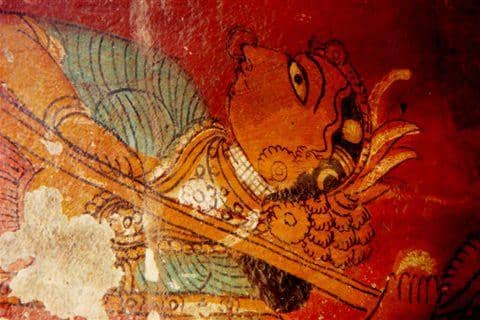
The Musical Steps
Entrance Mandapa
Tap these ancient steps to produce different musical notes, a testament to Chola ingenuity.
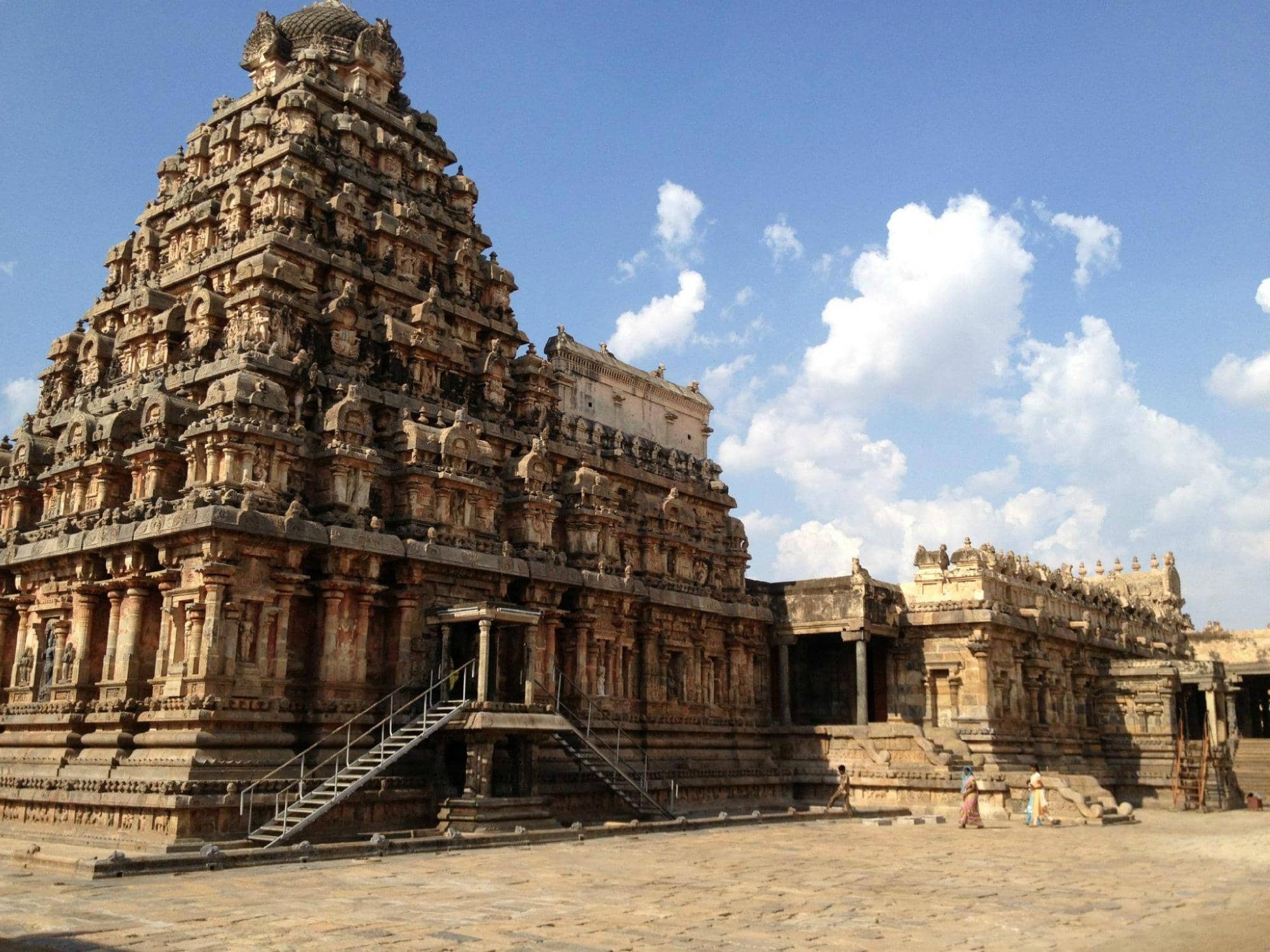
Chariot-Shaped Mandapa
Main structure
Marvel at the temple's unique design, resembling a grand chariot carved from stone.
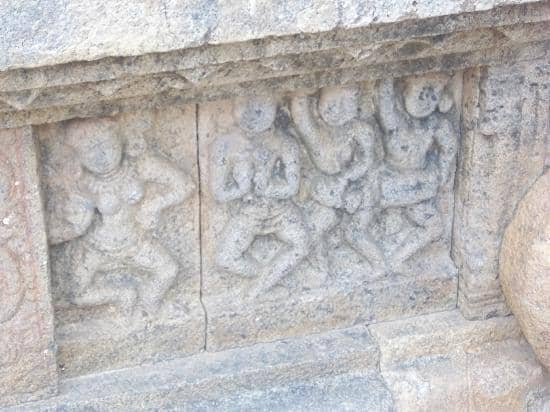
Intricate Stone Carvings
Pillars and walls
Discover detailed relief work depicting Hindu mythology and daily life from the 12th century.
Plans like a pro.
Thinks like you
Planning Your Visit
Timing is Key for Temple Exploration
Unlocking Temple Secrets
Best Times
Insider Tips
from TikTok, Instagram & Reddit
📸 Capture the Details
The intricate carvings are best photographed in soft light. Explore different angles to showcase the artistry.
🚶♂️ Explore at Your Pace
Allow at least an hour to truly appreciate the detailed sculptures and architectural marvels.
💡 Seek Local Insights
While guides aren't official, engaging with locals can offer fascinating stories about the temple's history.
👟 Comfortable Footwear
You'll be doing a lot of walking and exploring the temple grounds.
Tips
from all over the internet
📸 Capture the Details
The intricate carvings are best photographed in soft light. Explore different angles to showcase the artistry.
🚶♂️ Explore at Your Pace
Allow at least an hour to truly appreciate the detailed sculptures and architectural marvels.
💡 Seek Local Insights
While guides aren't official, engaging with locals can offer fascinating stories about the temple's history.
👟 Comfortable Footwear
You'll be doing a lot of walking and exploring the temple grounds.
What Travellers Say
Reviews Summary
Visitors consistently praise the Airavatesvara Temple for its stunning Chola architecture, incredibly detailed stone carvings, and serene atmosphere. The unique musical steps and chariot-shaped Mandapa are standout features, offering a glimpse into ancient ingenuity. It's highly recommended for history buffs, photographers, and spiritual seekers exploring Tamil Nadu's heritage.
"A stunning example of Chola architecture, the Airavateshwara Temple in Darasuram is a must-visit for history and temple lovers. Built in the 12th century by Rajaraja Chola II, this UNESCO World Heritage Site is known for its detailed stone carvings and sculptural finesse.
The temple is dedicated to Lord Shiva and has intricate carvings on every stone, from the pillars to the steps. The chariot-shaped structure, the musical steps (which produce different musical notes when tapped), and the delicate relief work are breathtaking.
The temple is peaceful, well-maintained, and not very crowded, offering a serene spiritual experience. It’s a great place to admire ancient Tamil architecture and experience divine energy in a calm atmosphere.
Highly recommended for photographers, heritage enthusiasts, and anyone exploring the temples of Tamil Nadu."
Hari Trivedi
"One of the UNESCO World heritage sites part of the living Chola Temples. Situated at Kumbakonam around 35 kms from Tanjore. The temple does not provide any guide services. It is temple dedicated to Lord Shiva. The temple has a staircase which plays musical sounds and the Mandapa which is built in the form of a chariot."
Prashant Gujanal
"Yet another must see place in this area with historical significance. Evening time is more beautiful due to the Sun's reflects spread of like wildfire across all structures adding more beauty the whole temple. For a new visitor, a guide may be helpful to fetch insights."
Gopalakrishnan Krishnamurthi (GK)
What People Like
What People Dislike
Frequently Asked Questions
🚇 🗺️ Getting There
The Airavatesvara Temple is located in Darasuram, about 4 km from Kumbakonam. You can easily hire a taxi or an auto-rickshaw from Kumbakonam to reach the temple. Many visitors also use their own transportation if exploring the region.
Yes, Airavatesvara Temple is situated approximately 35 km from Thanjavur (Tanjore), making it a feasible addition to a day trip exploring the Living Chola Temples.
Having your own transportation, whether a rented car or a hired taxi, is highly recommended for exploring multiple temples like Airavatesvara Temple and others in the Kumbakonam and Thanjavur areas.
Yes, it's possible to visit Airavatesvara Temple as part of a day trip from Trichy, though it will be a long day. The temple is about 90-100 km from Trichy, and you'd likely combine it with other nearby attractions.
While local buses might connect Kumbakonam to Darasuram, they can be infrequent. Hiring a taxi or auto-rickshaw offers more flexibility and comfort for reaching the temple directly.
🎫 🎫 Tickets & Entry
No, there is no ticket required to visit the Airavatesvara Temple. Entry to this magnificent UNESCO World Heritage site is free for all visitors.
The temple is generally open from early morning until evening. Specific timings can vary, but it's advisable to visit during daylight hours to best appreciate the intricate carvings.
Since there is no entry fee, advance booking is not necessary. You can visit the temple at your convenience during its opening hours.
While the main temple structure has steps and uneven surfaces typical of ancient sites, efforts are often made to improve accessibility. It's advisable to check on-site for the most current accessibility information.
Photography is generally permitted inside the temple premises, but it's always good practice to be respectful and avoid using flash photography in certain areas or when it might disturb other visitors.
🎫 🏛️ Onsite Experience
The temple is renowned for its Dravidian architecture, particularly the chariot-shaped Mandapa, the musical steps, and the incredibly detailed stone carvings that adorn every surface, depicting mythological scenes and ancient life.
Official guide services are not typically provided at the temple. However, you might find local individuals offering their knowledge, or you can research the temple's history beforehand to enhance your visit.
Most visitors find that 1 to 2 hours are sufficient to explore the temple thoroughly, appreciate its intricate carvings, and soak in the atmosphere.
The steps at the entrance of the Mandapa are designed to produce different musical notes when tapped, showcasing the advanced acoustic engineering and artistic skill of the Chola period.
The temple is generally not very crowded, especially on weekdays, offering a peaceful and serene spiritual experience. Evenings can see a slight increase in visitors.
🍽️ 🍽️ Food & Dining
You'll find a few local eateries and tea shops near the temple entrance offering South Indian snacks and meals. For a wider variety of dining options, it's best to head back to Kumbakonam.
Expect traditional South Indian vegetarian cuisine, including dosas, idlis, vadas, and thalis, at the local eateries.
Yes, small shops near the temple usually sell bottled water and other refreshments. It's always a good idea to stay hydrated, especially during warmer months.
Darasuram is a small town, and fine dining options are limited. Most visitors opt for local eateries or travel to Kumbakonam for more choices.
Carrying some snacks and water is a good idea, especially if you plan to spend a significant amount of time exploring or if you have specific dietary needs.
📸 📸 Photography
The chariot-shaped Mandapa, the musical steps, and the intricately carved pillars and walls offer excellent photographic opportunities. The exterior carvings and the temple's overall structure are also very photogenic.
Late afternoons are ideal as the setting sun casts a warm, golden light across the stone structures, enhancing their texture and detail. Early mornings also offer soft, diffused light.
Drone photography is generally not permitted at historical and religious sites without specific permissions. It's best to avoid using drones to prevent any issues.
Photography inside the inner sanctum where the deities are housed may be restricted. Always look for signage or ask temple authorities for guidance.
A versatile lens (like a 24-70mm) is useful for capturing both wide shots of the architecture and details of the carvings. A prime lens can be great for low-light conditions inside the temple.
For Different Travelers
Tailored advice for your travel style
👨👩👧 Families with Kids
While the temple is rich in history, keeping children interested might require some storytelling. Focus on the visual aspects – the animals carved on the walls, the gods and goddesses, and the sheer scale of the stone work. It's a great opportunity to introduce them to Indian mythology and ancient architecture in a tangible way. Remember to bring water and snacks, as dining options immediately around the temple are limited.
📸 Photographers' Paradise
Experiment with different angles and focal lengths to capture both the grandeur of the temple and the fine details of its sculptures. The musical steps also present a unique photographic challenge and opportunity. Be mindful of other visitors and respect the sanctity of the place while you capture its beauty.
🏛️ History & Architecture Enthusiasts
Take your time to explore every nook and cranny, as the temple is rich with inscriptions and sculptures that tell stories of the past. Understanding the historical context and the religious significance of the carvings will greatly enhance your appreciation of this architectural marvel. Consider reading up on the Chola period before your visit to gain a richer perspective.
Deep Dives
In-depth insights and expert knowledge
The Architectural Marvel of the Cholas
One of the most fascinating aspects is the chariot-shaped Mandapa, which appears to be pulled by stone horses. This unique structure, along with the musical steps that produce different notes when tapped, showcases the ingenuity of the artisans. The relief carvings are exceptionally detailed, depicting scenes from Hindu mythology, epics, and even aspects of daily life during the Chola period. These carvings are not just decorative; they serve as a visual narrative, preserving stories and cultural practices for centuries.
Unlike larger temples, Airavatesvara is known for its intimate scale and serene atmosphere. This allows visitors to closely examine the intricate details of the sculptures without feeling overwhelmed. The temple's preservation is remarkable, offering a tangible connection to the past and a deep appreciation for the artistic prowess of its creators. It's a place where history, art, and spirituality converge beautifully.
Exploring the Mythology and Symbolism
The numerous relief carvings are a treasure trove of stories from Hindu epics like the Ramayana and Mahabharata, as well as Puranic tales. You can find depictions of various deities, celestial beings, and scenes from the lives of saints. These sculptures are not merely decorative; they are didactic, intended to educate devotees about religious narratives and moral teachings. The vimana (the tower over the sanctum) is also intricately carved, symbolizing the cosmic mountain.
Beyond the grand narratives, the temple also subtly incorporates elements of Tamil culture and society of the 12th century. Observing these details can provide insights into the social customs, attire, and daily activities of the period. The overall design and iconography of the temple are meant to create a microcosm of the universe, guiding devotees towards spiritual enlightenment.
Social
from TikTok, Instagram & Reddit